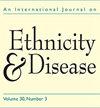中东和北非(MENA)成年人成本相关不依从的风险和保护因素。
IF 3.4
3区 医学
Q1 PUBLIC, ENVIRONMENTAL & OCCUPATIONAL HEALTH
引用次数: 3
摘要
目的:与费用相关的不遵守健康维护行为在普通人群中很常见,但我们对中东和北非(MENA)美国人的这些行为知之甚少。我们检查了密歇根州东南部中东和北非地区社区的费用相关不依从(CRN),以确定人口统计学预测因素、风险和保护因素。设计环境和参与者:我们使用了2019年5月至9月进行的中东和北非成年人横断面方便样本(N=398)的数据,以确定相关的人口统计学预测因素,以及个人健康、社会和临床因素与报告CRN可能性之间的关联。方法和措施:CRN是通过受访者是否报告以下任何一项来定义的:他们服用较少的药物,跳过剂量,或延迟获得处方。其他因素包括患者/提供者沟通和种族一致性、精神健康困扰、粮食不安全和保险状况。我们使用多变量逻辑回归模型来确定这些健康和社会因素与CRN的关系。结果:收入最高的人报告CRN的可能性最小。与有医疗补助的参与者相比,有私人保险和没有医疗保险的参与者更有可能报告CRN。CRN的危险因素包括食物不安全和精神健康困扰,尽管强有力的患者/提供者沟通对CRN有保护作用。讨论:中东和北非地区CRN的危险因素与一般人群的危险因素一致。由于提供者的沟通是保护CRN,干预措施的重点是改善患者/提供者的沟通可以作为一种方式来防止出于经济动机的药物依从性。本文章由计算机程序翻译,如有差异,请以英文原文为准。
Risk and Protective Factors for Cost-Related Nonadherence Among Middle East and North African (MENA) Adults.
Objective Cost-related nonadherence to health maintenance behaviors is common in the general population, yet we know little about these behaviors in Middle East and North African (MENA) Americans. We examined cost-related nonadherence (CRN) in the MENA community in SE Michigan to determine demographic predictors, and risk and protective factors. Design Setting and Participants We used data from a cross-sectional convenience sample of MENA adults (N=398) conducted May-September 2019 to identify relevant demographic predictors, as well as the association between individual health, social, and clinical factors and the likelihood of reporting CRN. Methods and Measures CRN was defined by whether respondents reported any of the following: that they took less medicine, skipped doses, or delayed getting a prescription filled. Other factors included patient/provider communication and racial concordance, mental health distress, food insecurity and insurance status. We used multivariable logistic regression models to determine association of these health and social factors with CRN. Results Those with highest incomes were least likely to report CRN. Participants with private insurance and with no coverage were more likely to report CRN compared with those with Medicaid coverage. Risk factors for CRN included food insecurity and mental health distress, though strong patient/provider communication was protective of CRN. Discussion The risk factors for CRN in the MENA community align with risk factors in the general population. As provider communication is protective of CRN, interventions focused on improving patient/provider communication may serve as a way to protect against financially motivated medication nonadherence.
求助全文
通过发布文献求助,成功后即可免费获取论文全文。
去求助
来源期刊

Ethnicity & Disease
医学-公共卫生、环境卫生与职业卫生
CiteScore
6.30
自引率
0.00%
发文量
43
审稿时长
6-12 weeks
期刊介绍:
Ethnicity & Disease is an international journal that exclusively publishes information on the causal and associative relationships in the etiology of common illnesses through the study of ethnic patterns of disease. Topics focus on: ethnic differentials in disease rates;impact of migration on health status; social and ethnic factors related to health care access and health; and metabolic epidemiology. A major priority of the journal is to provide a forum for exchange between the United States and the developing countries of Europe, Africa, Asia, and Latin America.
 求助内容:
求助内容: 应助结果提醒方式:
应助结果提醒方式:


